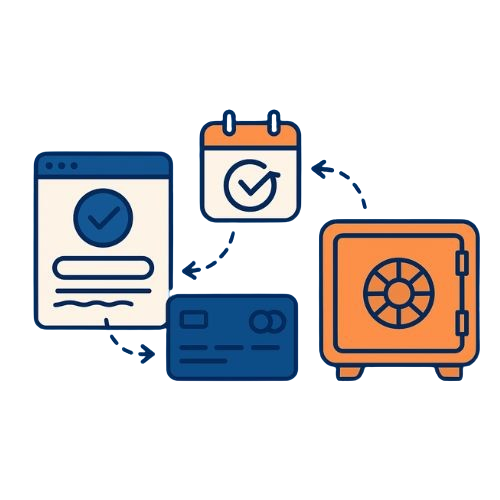Managing Recurring Payments with Token Vaults

Recurring billing can be a headache when card data lives on your servers. Token vaults offer a way to keep sensitive information off your systems while letting you charge subscribers on schedule. This post explains how token vaults work, why they matter for subscription services, and how to set up a smooth recurring‑payment flow.
How Token Vaults Work
Token Creation
When a customer makes their first purchase through your payment gateway, the card details are sent directly to the vault. A unique token replaces the actual card number and is returned to your system. Tokens are random strings with no usable payment data embedded.
Token Storage
Tokens and card mappings stay locked inside the vault. Your servers only see the token, so even if an attacker gains access, there’s nothing to exploit. This setup shrinks your PCI‑DSS scope and cuts down on audit steps.
Recurring Charge Flow
- Initial Sale: Customer completes checkout using a form that posts card data to the vault.
- Token Issuance: Vault generates a token and shares it with your backend.
- Scheduled Billing: On each renewal date, your billing service sends the token to the vault API.
- Processor Handoff: Vault returns the real card data to the processor for authorization.
- Logging & Alerts: Every use of a token is logged, and you get notifications if charges fail.
Why Subscription Services Benefit
Narrower Compliance Requirements: Because your infrastructure never holds raw card numbers, most of your environment stays out of PCI scope. That means fewer controls to manage and less paperwork during audits.
Lower Fraud Exposure: Tokens can’t be reversed to reveal card details. If a token is stolen, it’s worthless to fraudsters, reducing the risk of data breaches.
Better Approval Rates: Advanced vaults support network tokens, which update automatically when card networks rotate credentials. This dynamic approach keeps more charges approved on renewals.
Freedom to Switch Processors: A centralized vault lets you reroute transactions through different payment processors without asking customers to re‑enter cards. You can chase lower fees or target new regions without new integrations.
Best Practices for Implementation
- Pick a PCI‑DSS Level 1 Vault: Select a vault provider certified at the highest level. Look for built‑in support for network tokenization and card‑on‑file flows.
- Secure Your API Calls: Use HTTPS with short‑lived API keys, restrict calls by IP, and rotate credentials regularly. Avoid embedding long‑term secrets in client‑side code.
- Monitor and Recover: Track declines and errors on scheduled charges. Build retry logic for temporary failures (like insufficient funds) and alert customers when action is needed.
- Communicate with Customers: Send email or SMS reminders before each renewal date. Let customers accept payments online for card updates via a secure link, reducing unexpected declines.
Step‑by‑Step Setup Guide
- Sign Up: Create an account with a token vault provider.
- Integrate Checkout: Add the vault’s JavaScript or SDK to your checkout page so card details go straight to the vault.
- Tokenize Initial Payment: Process the first charge through your payment gateway, capturing the returned token.
- Store Token IDs: Save only the token in your customer database—never the full PAN.
- Schedule Recurring Jobs: Use a cron job or scheduler to call the vault API with each token on billing dates.
- Handle Declines: Implement retry rules (e.g., three attempts over 72 hours) and pause subscriptions after repeated failures.
- Provide Self‑Service: Link to a secure payment page where customers can update cards via the official site.
Tying into Your Existing Stack
If you already use a gateway or merchant account, adding token vaulting can be a quick win. The vault sits between your checkout and processor, so minimal code changes unlock recurring‑billing features. For more details, check out the full feature list on the official site.
Final Thoughts
Token vaults transform subscription billing into a reliable, low‑risk operation. You offload sensitive data, cut compliance hurdles, and keep customers on board without extra steps. Whether you run a SaaS platform, membership program, or any service that bills on a schedule, tokenization should be the foundation of your billing architecture.